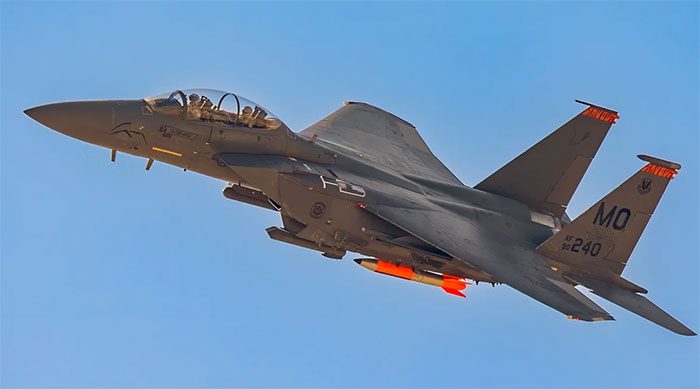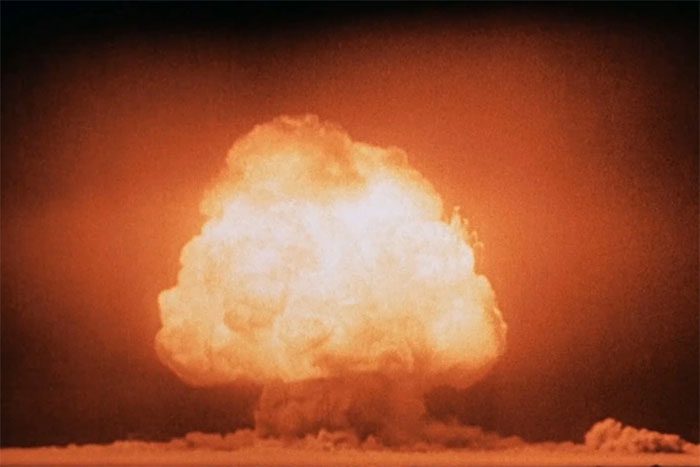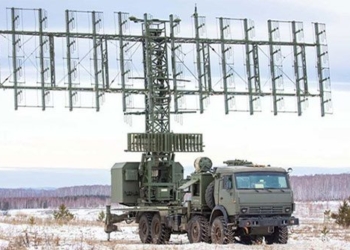The 13th version of the B61 nuclear bomb that the United States plans to develop has a power 24 times greater than the bomb that destroyed Hiroshima.
On October 27, the U.S. Department of Defense announced its intention to create a new variant of the B61 nuclear gravity bomb. This variant is called B61-13, marking the 13th iteration of this famous nuclear bomb series.

An F-15 carrying a simulated version of the B61 nuclear bomb. (Photo: USAF).
As a gravity bomb, the B61-13 is designed to be dropped from fighter jets or specialized bombers. This will result in a thermonuclear explosion and radioactive debris with devastating effects on humans as well as civil and military structures in the affected area.
Why is the U.S. developing a new nuclear bomb?
While atomic bombs have been around for nearly 80 years, thermonuclear bombs (or hydrogen bombs) have existed for around 60 years. The first variant, the B61, was produced in 1963, focusing on utilizing the nuclear fusion reaction of the warhead to create an explosive reaction.
Among the B61 nuclear bomb variants, many are still in use today, including B61-3, B61-4, B61-7, B61-11, and B61-12. With the introduction of B61-13, it is expected to replace the existing stockpile of the B61-7 variant.

The B61-12 nuclear bomb tested at Sandia National Laboratory, U.S. in 2019 (Photo: Sandia National Laboratories).
Similar to the B61-13, the B61-7 was designed solely for use with bombers. It also has performance equivalent to the B61-7 series but comes with added safety, security features, and an inertial navigation system, enhancing the accuracy of the currently produced B61-12 series.
John Plumb, Assistant Secretary of Defense for Space Policy, stated: “The B61-13 represents a reasonable step to address the challenges of defense security issues.”
He also noted that while the B61-13 provides the U.S. with flexible capabilities, the production of this weapon will not increase the total number of weapons in the nuclear stockpile, as it will replace the B61-7 series as mentioned.
How powerful is the new generation of the B61-13 nuclear bomb?
The simplest way to describe the power of a nuclear bomb is to base it on the explosive force (equivalent to TNT) released upon detonation. The B61-3, -4, -7, and -12 variants all have dial-a-yield capabilities, meaning their explosive yield can be set at the time the bomb is loaded onto the aircraft.
This yield can be as low as 0.3 tons of TNT, causing a small explosion, or up to 15 kilotons (15,000 tons of TNT) for the Little Boy dropped on Hiroshima, or 20 kilotons for the Fat Man dropped on Nagasaki.

The B61-13 nuclear bomb is 24 times stronger than the bomb that destroyed Hiroshima. (Illustrative photo: Getty).
According to Popular Science, the maximum yield of the B61-4 and B61-12 can reach up to 50 kilotons. However, the B61-13 is believed to have a significantly higher explosive power. This bomb can produce a maximum explosion of 360 kilotons, which is 24 times larger than the bomb dropped on Hiroshima, and approximately 18 times the bomb that caused the collapse of Nagasaki.
It is estimated that a new generation B61-13 bomb, if adjusted to maximum yield, could kill approximately 778,000 people, injure around 1,045,000 individuals, and release radiation to surrounding areas within a radius of 350 km.
With this terrifying power, the B61-13 is expected to enhance the deterrence capability of the U.S. against adversaries, as well as provide the U.S. and allies with more options to strike specific military targets.
The Federation of American Scientists states that the U.S. currently possesses about 5,200 nuclear weapons, which is lower than Russia’s 5,900. Currently, the U.S. can launch nuclear warheads through various means, including submarine-launched missiles, intercontinental ballistic missiles fired from silos, or nuclear bombs or missiles launched from aircraft.
However, the scale and power of nuclear weapons have limited their use in all wars since their devastating debut in August 1945.




















































